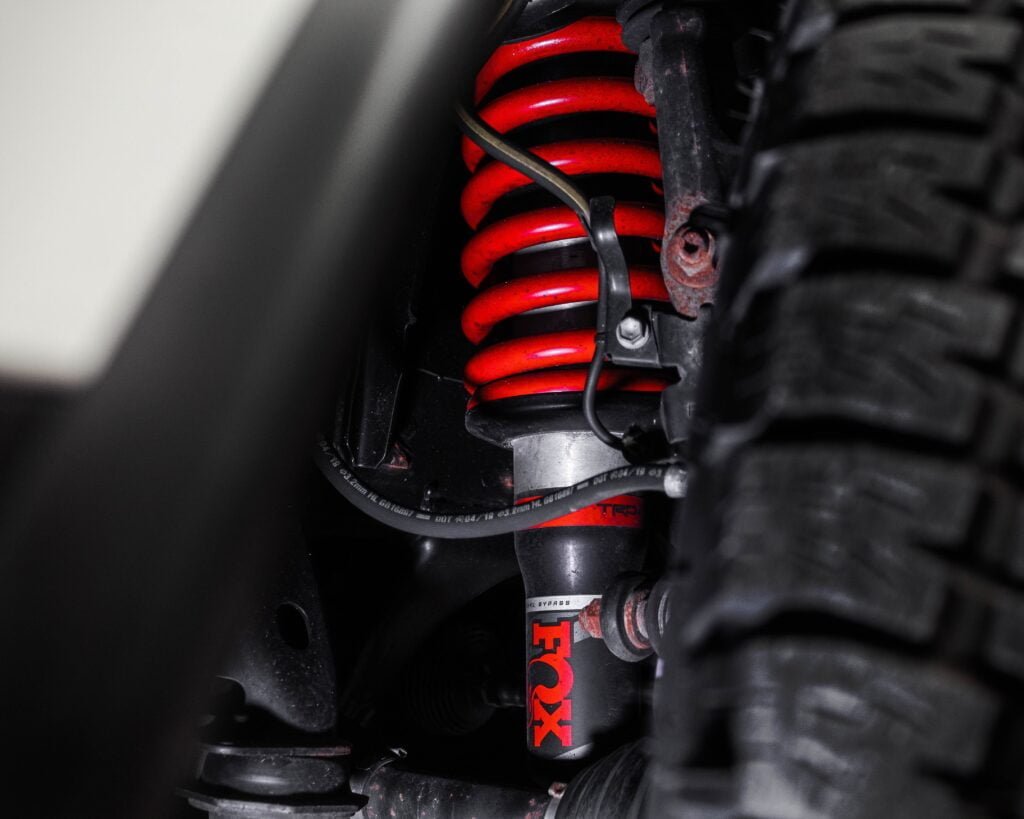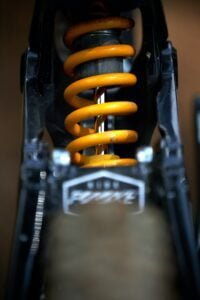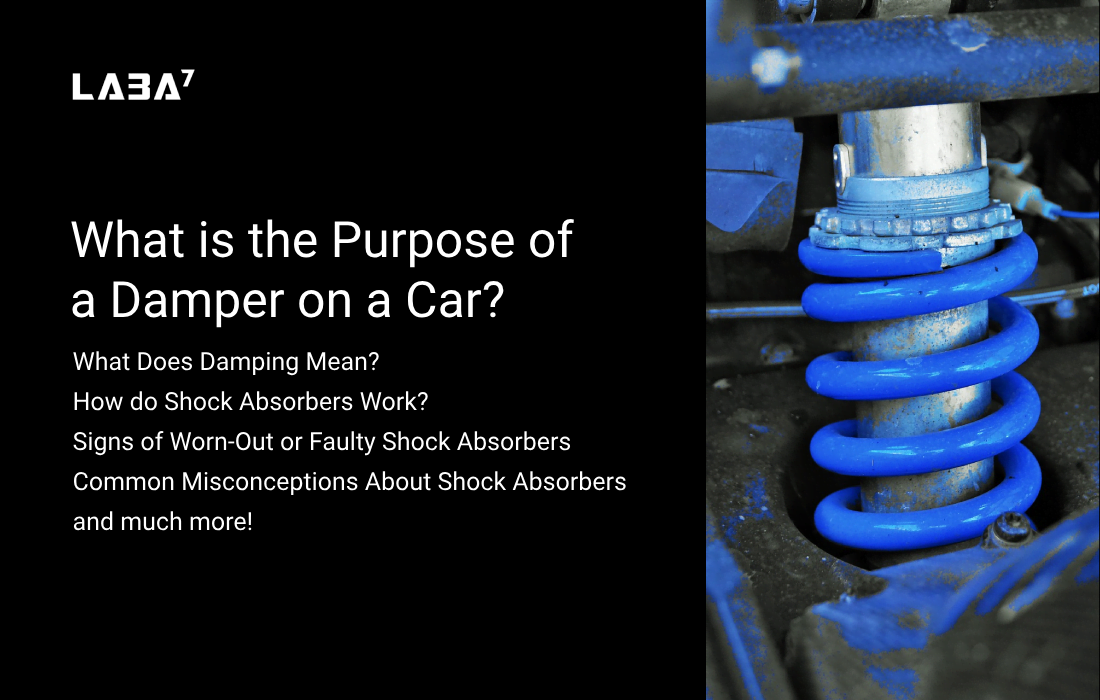In this article, we will explore the purpose of a damper and why it is a crucial component of your vehicle’s suspension system.
The main purpose of shock absorbers, also known as dampers, is to ensure a smooth and comfortable ride by reducing the impact of these disturbances. They help maintain tire contact with the road, preventing excessive bouncing, and keeping your car stable and balanced. Moreover, shock absorbers play a vital role in improving braking performance and preventing unnecessary wear and tear on other suspension components.
Table of contents:
- What Does Damping Mean?
- Understanding Shock Absorbers in Cars
- How does a Damper Work?
- Importance of Shock Absorbers
- Signs of Worn-Out or Faulty Damper
- Benefits of Replacing Shock Absorbers
- Different Types of Shock Absorbers
- How to Maintain and Prolong the Life of a Damper?
- How to fix a shock absorber at home?
- Common Misconceptions About Dampers
- In Conclusion
- FAQ
What Does Damping Mean?
Shock absorbers are devices that help control the movement of your car’s suspension. Think of it as the mediator between the bumpy reality of the road and the comfort you feel inside the car.
They work by absorbing and dissipating the energy generated from the up-and-down motion of the suspension springs. This energy is created when your car encounters bumps, potholes, or uneven road surfaces.
Understanding Shock Absorbers in Cars

Shock absorbers have two main components – a damper and a spring. As cars travel over terrain, the damper is pushed in to absorb disturbances, and springs help it to return to its original position.
Without springs car or any other vehicle would simply descend to its “belly” because dampers cannot raise themselves or the vehicle. Without dampers springs springs would continually bounce, resulting in an unstable ride.
How does a Damper Work?
At their core, shock absorbers are energy converters. They take the kinetic energy from the spring’s motion and transform it into heat, which then dissipates. A piston inside a fluid-filled cylinder is the primary mechanism. As the piston moves, it pushes fluid through small holes and valves, effectively absorbing the impact of the road and slowing down the spring’s oscillation.
Importance of Shock Absorbers
Beyond comfort, shock absorbers play a pivotal role in keeping the car stable, maintaining consistent wheel contact with the road, and ensuring optimal braking efficiency.
Signs of Worn-Out or Faulty Damper

- Uneven tire wear
- Excessive bouncing after hitting a bump
- Leaking fluid
- Vehicle swaying or leaning during turns
Benefits of Replacing Shock Absorbers
Upgrading or merely replacing worn-out shock absorbers can result in:
- Enhanced vehicle stability
- Reduced tire wear
- Improved braking performance
- A smoother, more comfortable ride
If your vehicle is equipped with high-tier or custom shock absorbers, you can simply service them and restore their effectiveness.
Different Types of Shock Absorbers
There are several types available:
- Twin-tube
- Gas-filled
- Mono-tube
- External reservoir
- Adaptive or electronic
Each type has its pros and cons, tailored for specific driving conditions and vehicle types. Read more about it in this Exhaustive Guide to Shock Absorbers.
How to Maintain and Prolong the Life of a Damper?
Regular maintenance tips:
- Avoid overloading your vehicle
- Get regular suspension checks
- Ensure timely replacements of worn-out suspension parts
How to fix a shock absorber at home?
DO NOT try fixing a shock absorber at home. We understand that some people want to save money by fixing their shocks at home, but unless you are an experienced or trained suspension mechanic, please do not attempt it.
Shock absorbers are one of the most critical components of a vehicle. As mentioned before, they help to keep your car, truck, or other vehicle, stable and balanced a.k.a. keep it on the road. If one does not have proper training or experience chances are they will ruin shocks that will most certainly lead to the vehicle’s bad handling and impaired safety.
Even if YouTube video is very descriptive, do not try to fix your shock absorber at home. There are more risks than benefits of doing so.
Team of LABA7
Here are a few reasons why no one should not try to fix your shock absorber at home:
- Shock absorbers are complex components that require specific knowledge to repair properly.
- Proper shock absorber repair often requires specialized tools that most home mechanics don’t have. Such as shock dynos, spring rate testers, shock bleeders, spring removal tools, and many others.
- Without proper suspension equipment, it’s difficult to ensure the repair meets manufacturer specifications.
- Shock absorbers are under high pressure and can be dangerous if not handled correctly.
- Incorrect repairs can lead to more extensive and expensive damage to the vehicle.
- The process can be time-consuming and frustrating for those without experience.
- When factoring in the cost of tools and potential risks, professional repair is a more economical solution.
Tools one needs to properly fix the shock absorbers
Fixing shock absorbers is best left to professionals. They have all the necessary tools and equipment to get the job done. Here is a list of essential tools:
- Jack and jack stands
- Socket set and wrenches
- Spring compressor: Crucial for safely compressing and removing coil springs.
- Torque wrench
- Piston rod compressor
- Shock absorber pliers
- Hydraulic press
- Penetrating oil
- Shock bleeders: To change the hydraulic fluid of the shock absorber
- Rubber mallet
- Safety equipment: Gloves, safety glasses, and sturdy shoes.
- Gas charging equipment
- Alignment tools
- Shock dyno: To test shock absorbers after the job is complete.
Remember, using these tools without proper training can be dangerous. Shock absorbers contain high-pressure gas and oil, which can cause injury if mishandled. If you’re not confident in your abilities, it’s safer and often more cost-effective to have a professional handle the repair.
Common Misconceptions About Dampers
One common myth is that shock absorbers support the vehicle’s weight. In reality, that’s the job of the springs. Shock absorbers control the movement of the springs.
- All dampers are the same: There are actually various types (hydraulic, pneumatic, magnetic, etc.) with different characteristics and applications.
- Stiffer is always better: Many believe that stiffer dampers always improve performance. This myth has some truth in it, but isn’t true for all situations or vehicles.
- Dampers last forever: Like any mechanical component, dampers wear out over time and need replacement.
- You can judge a damper’s condition by looking at it: Many damper issues aren’t visible externally and require testing to diagnose.
- Adjustable dampers are only for racing: Many road cars now feature adjustable dampers for improved versatility.
- Replacing one damper is sufficient: It’s recommended to replace dampers in pairs to maintain balance and performance.
In Conclusion
Shock absorbers or dampers are an integral component of almost any vehicle. Their role is to ensure a smooth and safe drive or ride. So, the next time you ponder the car shock absorber price or any other related aspect, remember the safety, comfort, and stability they bring to your journeys.

FAQ
What is the meaning of damper?
A damper, also known as a shock absorber, is a part of the vehicle’s suspension system meant to reduce the impact of road bumps and pits, as well as to enhance ride quality. It prevents unwanted spring moves through a process known as dampening.
What is the purpose of a damper?
A damper or a shock absorber is one of the key parts responsible for your vehicle’s ability to remain stable on the road. The primary functions of a damper include absorbing shocks, controlling spring rebound, and stabilizing the car’s handling. A damper also plays a crucial role in ensuring a safer driver’s experience.
Where are the dampers on a car?
Dampers, also known as shock absorbers, are part of the car’s suspension system and are typically located at each wheel. In the front of the car, dampers are usually integrated with struts (MacPherson strut set) and are situated between the chassis and wheel hub. In the rear suspension, dampers can be standalone or part of a MacPherson strut, positioned between the rear axle or control arms and the car’s chassis or frame.
How often should dampers be replaced?
Dampers usually need to be replaced every 80,500 to 160,000 kilometers or 50,000 to 100,000 miles. However, this can vary depending on your driving habits and the purpose of the vehicle. If you are unsure about the condition of your dampers, it is best to have them inspected by a professional.

